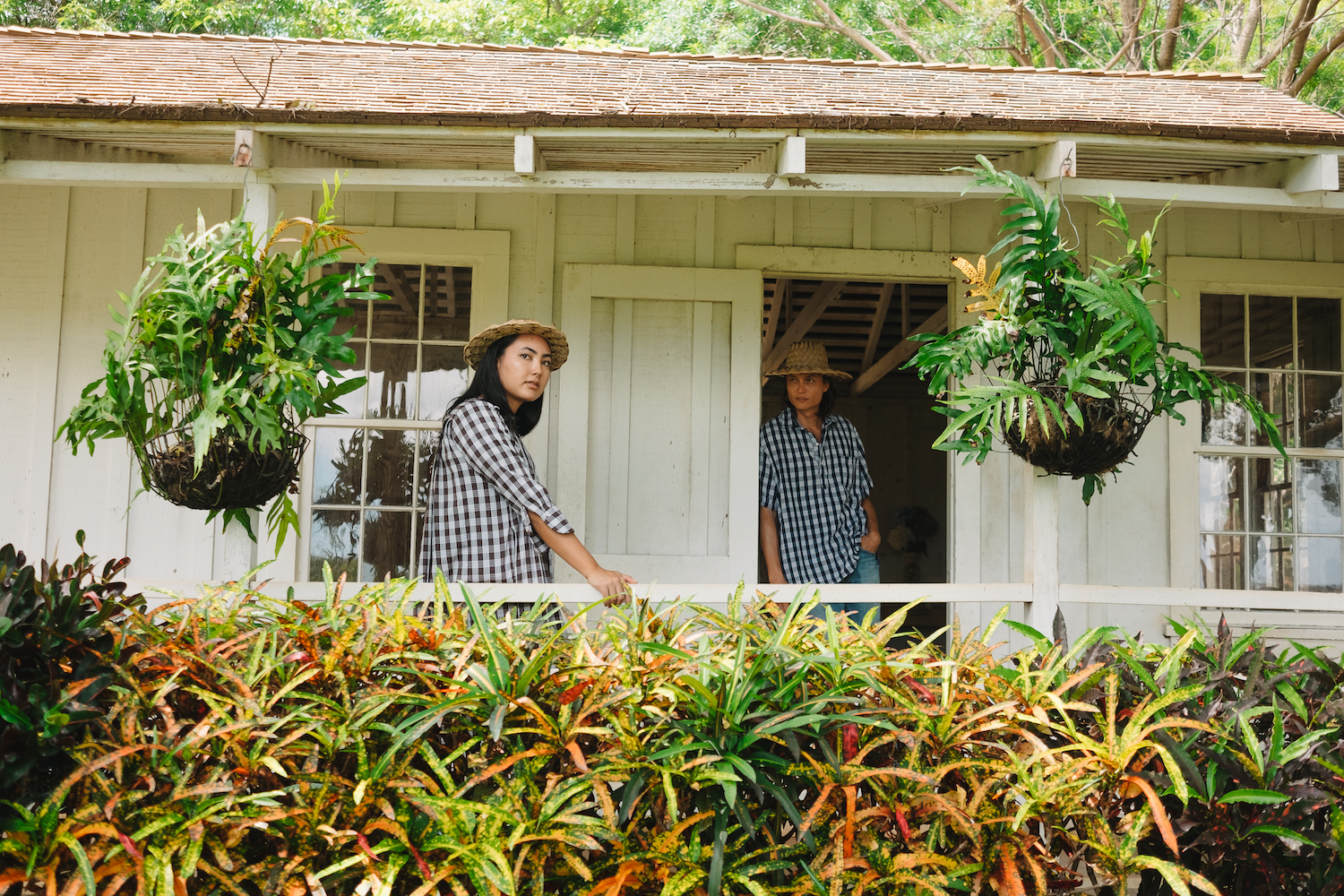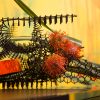It’s believed to be more local than the aloha shirt: the checked woven button-up known as palaka.
Plantation workers first embraced the garment for its sturdiness in the fields. Later, it was donned for its reputation as “the traditional ‘Pattern of the Islands,’” as explained by scholar Alfons L. Korn.
While the garment’s name refers to its inimitable pattern, the word palaka is actually a Hawaiian transliteration of the English word “frock.”
It comes from the loose-fitting, long-sleeved work shirts that Western sailors wore when they first appeared in the islands, starting with Captain Cook in 1778.
Apparently, when the Hawaiians asked about the shirt’s fabric, sailors told them about the style of shirt, and the name stuck.
Simple in silhouette, the palaka stands out for its pattern. The fabric hails from Germany, where it was first imported from in the 1800s to create hardy clothing for plantation workers.
According to Barbara Kawakami, author of Japanese Immigrant Clothing in Hawaii, 1885-1941, “During the 1920s and 1930s, palaka was woven of 100 percent cotton and was very thick, very strong, and rough in texture.”
Palaka was more aloha than the aloha shirt, with its history and all those years it has been worn by so many diverse people. It was the most important shirt that Hawai‘i’s ever had.
The sturdy twill was occasionally called “Hawaiian denim.” Japanese immigrants who worked the fields referred to the print as gobanji (the Japanese term for plaid, or checkered, design). “[They] were particularly fond of the palaka because it reminded them of the plaid prints in the yukata (unlined kimono made of printed cotton) they had worn in the summer months in their villages back home,” Kawakami wrote.
Jacket Origins
Most commonly recognized today as a shirt, the palaka began as a jacket.
Its long-sleeved style became popular in the 1920s with plantation workers in the pineapple and sugarcane fields. The only color choice available was navy, likely because the material was imported.
Plantation workers appreciated that the durable fabric protected them in the fields, dried quickly in the rain, and was easy to mend; stevedores and paniolo (Hawaiian cowboys) adopted the palaka for laboring under the hot Hawaiian sun. Workers wore the palaka with denim trousers, creating a signature Hawai‘i ensemble.
The palaka’s popularity spurred a cottage industry, particularly for Okinawan immigrant Zempan Arakawa.
In 1904, Arakawa came to Hawai‘i to work, becoming a water boy on a sugar plantation in Waipahu. After obtaining a foot-pedal sewing machine, he started a makeshift tailor shop. Alongside kau kau bags (made for carrying food) and tabi (Japanese split-toe socks), he sold palaka work shirts for 75 cents each.
This venture grew into Hawai‘i’s largest rural department store, Arakawa’s of Waipahu, which lasted from 1909 to 1995.

Embraced by Social Set
By the late 1930s, the palaka had been adopted by the social set. As a result, apparel manufacturers “started cutting off the sleeves and using a lighter-weight fabric,” explains Linda Arthur Bradley, professor emerita at Washington State University and author of Aloha Attire: Hawaiian Dress in the Twentieth Century.
“The shirt went from being a kind of jacket to what we recognize today as an aloha shirt,” she writes.
Eventually, the palaka pattern was used for other attire: bikinis, board shorts, table linens. Young people had palaka garments made for play clothes, according to Bishop Museum historian DeSoto Brown.
He even recalls an image of a Kahala home draped in palaka curtains and table cloths. Everyone wore these short-sleeve palaka shirts, and the classic pattern expanded into more colorful hues, ranging from red and pink to green and orange.
While the palaka had its moment with tourists, the shirt mostly resonated with the local crowd. “
It really was the kama‘āina shirt,” says Dale Hope, author of The Aloha Shirt: Spirit of the Islands. He remembers how Goro Arakawa (Zempan’s son who took over Arakawa’s with his five siblings) told him that wearing the palaka “was more aloha than the aloha shirt, with its history and all those years it has been worn by so many diverse people.” Goro even claimed, “It was the most important shirt that Hawai‘i’s ever had.”

By the 1950s and 1960s, Bradley explains, “The palaka shirt became a badge of local identity.”
From the 1960s through the 1980s, while O‘ahu underwent rapid urbanization, palaka emerged as a sartorial symbol in local politics.
But unlike the aloha shirt, the palaka’s popularity has waned, especially since the original reason for the palaka’s existence—the plantations—are gone.
Yet glimmers of resurgence exist. Patagonia created palaka board shorts in 2008, and local designers Matt Bruening and Kini Zamora both created collections including the fabric.
Today, brands including the Hawai‘i Island-based Western Aloha and Los Angeles-based Gordon promote palaka-patterned garments.
Given the palaka’s storied past, the pattern inherently communicates a special connection to Hawai‘i. According to Hope, wearing palaka demonstrated that you were rooted to the islands, “and that you appreciated this wonderful Hawaiian, kama‘āina lifestyle,” he says. “It was probably the loudest print Hawai‘i’s ever done.”




